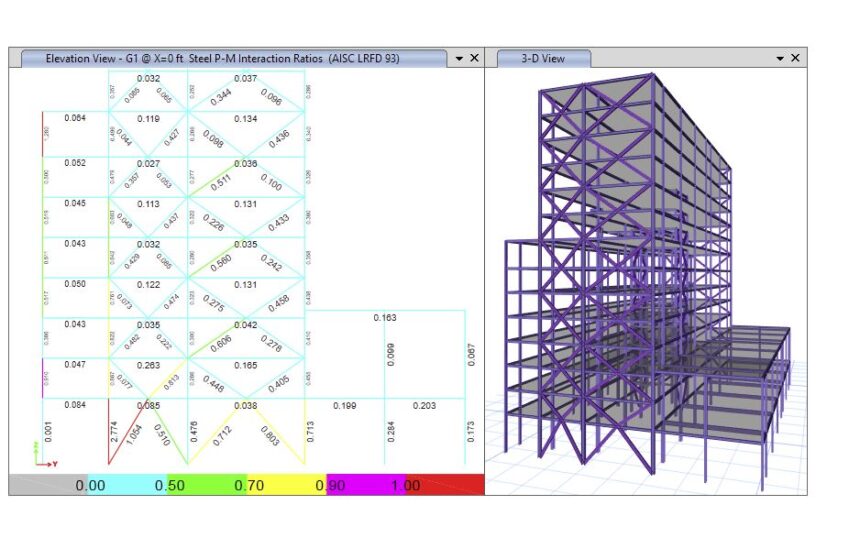Structural analysis is a crucial aspect of civil engineering that involves evaluating and determining the effects of loads and forces on physical structures and their components. This process helps to ensure that a structure can endure the loads it is expected to face throughout its lifespan, including its own weight, the weight of the users, environmental stresses like wind and seismic activities, and other temporary loads without failing or experiencing undue deformation. Structural analysis aids in the design, safety assessment, and optimization of buildings, bridges, towers, and other constructions, enabling engineers to predict the performance of structures under various conditions.
Fundamental Concepts
Loads and Forces: Structural analysis starts with identifying all possible loads that a structure might experience. These include dead loads (permanent or static loads like the weight of the structure itself), live loads (temporary or dynamic loads like vehicles, furniture, and occupants), environmental loads (such as wind, snow, and earthquake forces), and others.
Stress and Strain: Analysis involves calculating the stress (force per unit area) and strain (deformation in the structure) resulting from the applied loads. Understanding how materials within the structure respond to stress and strain is essential for determining whether they can withstand the forces they’ll encounter.
Support Conditions and Restraints: The way a structure is supported or restrained affects how it carries loads. Different types of supports, such as pinned, fixed, or roller supports, offer various degrees of freedom of movement, significantly influencing the structure’s behavior under load.
Types of Structures: Structural analysis can be applied to a wide range of constructions, from simple beams and frames to complex trusses and arches. The structural form impacts the analytical approach and the distribution of forces throughout the structure.
Methods of Structural Analysis:
1. Analytical Methods: These include classical techniques based on mathematics and physics, such as the method of joints and sections for truss analysis, Euler-Bernoulli beam theory, and the method of virtual work. Analytical methods are often used for simpler structures or as the theoretical basis for more complex analyses.
2. Numerical Methods: For more complex structures, numerical methods like the Finite Element Method (FEM) are used. FEM breaks down the structure into smaller, manageable parts (elements) and uses computer software to perform detailed calculations on each part, allowing for a comprehensive analysis of the entire structure.
3. Experimental Methods: In some cases, physical models of structures are tested under controlled conditions to observe their behavior under load. While this approach can be time-consuming and expensive, it provides valuable insights into the performance of novel or unconventional structural designs.
Importance of Structural Analysis in Engineering: Structural analysis is fundamental to ensuring the safety, reliability, and cost-effectiveness of architectural and engineering projects. By precisely understanding how structures behave under various loads, engineers can design safer buildings that efficiently use materials, reducing unnecessary expenses while complying with building codes and standards. Moreover, it enables the identification and mitigation of potential failure points, enhancing the overall resilience of structures against everyday stresses and extreme events. In an era where architectural ambitions continue to grow, coupled with the increasing frequency of extreme weather due to climate change, the role of structural analysis in civil engineering is more critical than ever. It not only supports the creation of innovative and aesthetically pleasing designs but also ensures that these structures can stand the test of time and protect their occupants.
